Removable Wall Stickers for Industrial Facilities with Post-It™ Note like adhesive
CLICK HERE for our new safety store, Safety Banners USA (safetybannersUSA.com)
Our removable Wall Stickers with Post-It™ Note like adhesive for Industrial Facilities are an amazing safety poster replacement. They sticks to almost anything, even cinder block. Super easy to put up ANYWHERE, super easy to remove and can even be taken to another wall and used again. They are amazing.
Our wall stickers are made from a new, state-of-the-art a fabric material with a very light removable adhesive on the back (like a Post-It® Note). They will work on almost any wall or surface - even concrete - are very very VERY easy to put up and look GREAT. PLUS - there is NO residual adhesive left on the wall and will NOT DAMAGE ANY SURFACE - GUARANTEED!!
No hanger or holder required. You can peel them off the wall and move them to another wall location keeping your messages fresh.
Need a sample? Just call us and we will send a small safety wall sticker sample to you in tomorrow's mail.
Sooooooo EASY to put up and NEVER leaves a RESIDUE! Peel off the backing, place it on any wall - You're done.

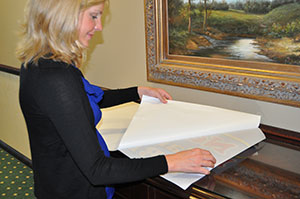
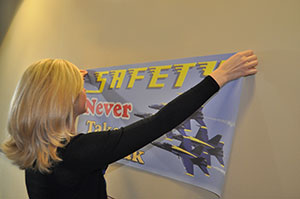
Our safety wall decals WILL NOT STRETCH or get damaged during removal and NO UGLY RESIDUE on your wall! When you expect the best in safety wall stickers SafetyBanners.Org delivers. Have more questions? Send us an email (top center button) or give us a call at 901-759-0932 Central Time.
SafetyBanners.Org
1657 Shelby Oaks Drive N.
Memphis, TN 38134
Serving American industry since 1995
Our Industrial Workplace Safety Posters are printed on Dura-Tough™ Tyvek and are waterproof and nearly indestructible
When you purchase a safety poster from SafetyBanners.Org or Safety Banners USA it is ALWAYS produced on Dura-Tough™ Tyvek and ready for use in an insustrial environment outside and inside.
Look under the "Posters Tab" for any image you click.
CLICK HERE for our new safety store, Safety Banners USA (safetybannersUSA.com)
Every safety banner has a corresponding vertical safety poster. On the image order page that has the tabs, the vertical image on your right is what that specific safety poster will look like.
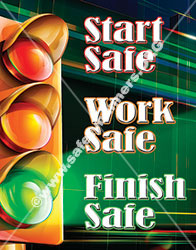
Our posters come in several sizes from a small safety poster to a large safety poster. Custom size safety posters can be produced but require a custom price quote. Call or email us with your specific size needs for your personalized quote.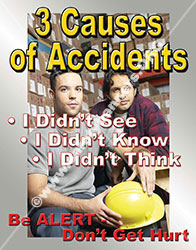
The industrial workplace needs to communicate with their employees about safety on an ongoing basis. Safety posters are an excellent and low cost way to both communicate safety with your employees and to encourage safe behavior. Many American companies use safety posters in their industrial facility or warehouse. Facility safety managers choose safety posters that are relevant to their workplace and the responsibilities of their workers. Only SafetyBanners.Org has America's largest selection of laminated safety posters at low prices delivered fast. Over 800 safety posters are available online.
Our professionally designed, full-color safety posters have a powerful impact on employee behavior. Use safety posters to raise awareness and watch your injury rate drop. It is TRUE - Using Safety Posters work! Try them NOW. You will find our Special 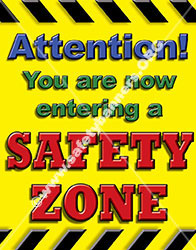 Safety Awareness Posters are being used by over 4,000 safety professionals to add impact to their safety programs. With safety posters you can:
Safety Awareness Posters are being used by over 4,000 safety professionals to add impact to their safety programs. With safety posters you can:
* Add extra impact to your safety meetings with eye-catching posters that reinforce your safety message
* Keep employee interest and attention on your safety awareness pro\ram with new safety posters
* Deliver your safety messages in many new and interesting ways … so employees don't begin to ignore your messages.
SafetyBanners.Org
1657 Shelby Oaks Drive N.
Memphis, TN 38134
Serving American industry since 1995